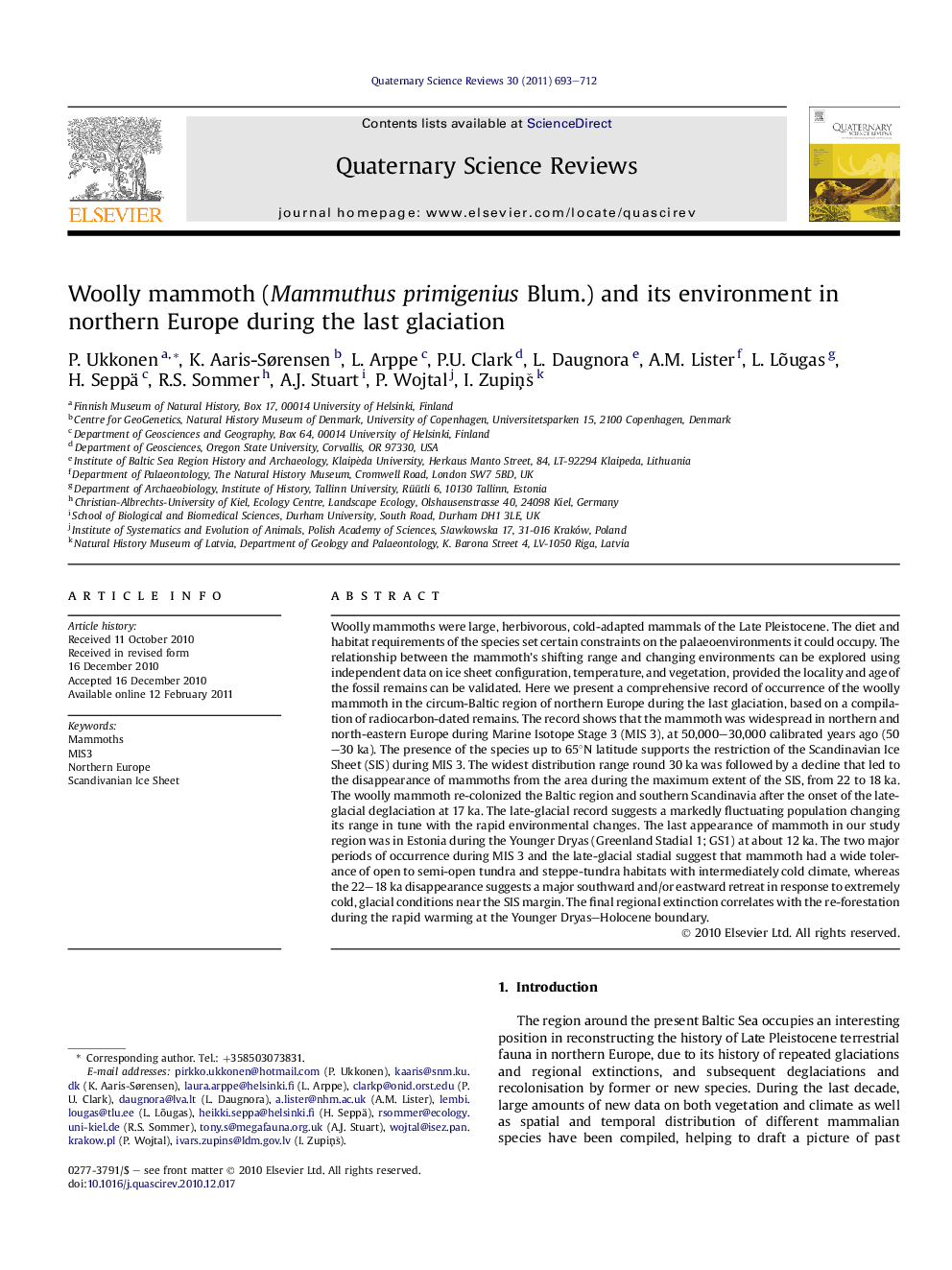| کد مقاله | کد نشریه | سال انتشار | مقاله انگلیسی | نسخه تمام متن |
|---|---|---|---|---|
| 4736978 | 1640915 | 2011 | 20 صفحه PDF | دانلود رایگان |

Woolly mammoths were large, herbivorous, cold-adapted mammals of the Late Pleistocene. The diet and habitat requirements of the species set certain constraints on the palaeoenvironments it could occupy. The relationship between the mammoth’s shifting range and changing environments can be explored using independent data on ice sheet configuration, temperature, and vegetation, provided the locality and age of the fossil remains can be validated. Here we present a comprehensive record of occurrence of the woolly mammoth in the circum-Baltic region of northern Europe during the last glaciation, based on a compilation of radiocarbon-dated remains. The record shows that the mammoth was widespread in northern and north-eastern Europe during Marine Isotope Stage 3 (MIS 3), at 50,000–30,000 calibrated years ago (50–30 ka). The presence of the species up to 65°N latitude supports the restriction of the Scandinavian Ice Sheet (SIS) during MIS 3. The widest distribution range round 30 ka was followed by a decline that led to the disappearance of mammoths from the area during the maximum extent of the SIS, from 22 to 18 ka. The woolly mammoth re-colonized the Baltic region and southern Scandinavia after the onset of the late-glacial deglaciation at 17 ka. The late-glacial record suggests a markedly fluctuating population changing its range in tune with the rapid environmental changes. The last appearance of mammoth in our study region was in Estonia during the Younger Dryas (Greenland Stadial 1; GS1) at about 12 ka. The two major periods of occurrence during MIS 3 and the late-glacial stadial suggest that mammoth had a wide tolerance of open to semi-open tundra and steppe-tundra habitats with intermediately cold climate, whereas the 22–18 ka disappearance suggests a major southward and/or eastward retreat in response to extremely cold, glacial conditions near the SIS margin. The final regional extinction correlates with the re-forestation during the rapid warming at the Younger Dryas–Holocene boundary.
Journal: Quaternary Science Reviews - Volume 30, Issues 5–6, March 2011, Pages 693–712